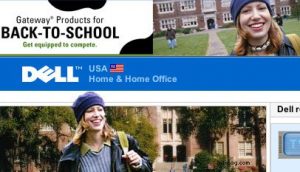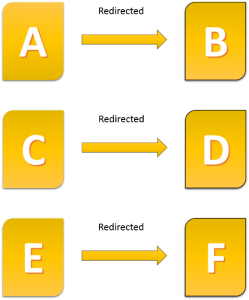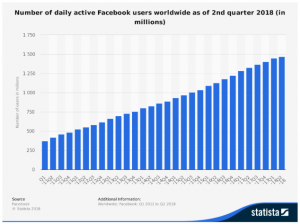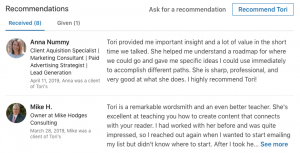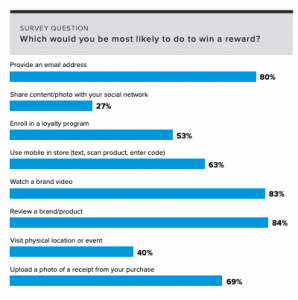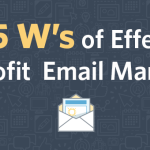
It’s easier than ever for nonprofits to stay connected with the people who matter most to their organization.
While newer technology has brought some enormous benefits, it also comes with also some challenges.
Marketers need to consider widely different channels to reach all the right audiences. Besides that, they need to stand out. Social media, video, microsites, paid ads, search results, and email are saturated with messages from marketers.
Many of the newest marketing channels are proven innovative communication tools, but email remains a pillar of effective marketing. With 91 percent of all US consumers checking email daily, email marketing should be at the center of your nonprofit’s outreach efforts.
The best email marketers enjoy a high return on investment of their efforts by running targeted, creative, thoughtful campaigns.
What makes an email campaign top notch? Well, a little planning goes a long way.
Take the time to map out the who, what, where, when, and why of your email marketing strategy and you can use email to help your organization:
- Reach fundraising goals
- Increase social shares
- Personalize your brand
- Build rapport with donors
- Educate supporters on your cause
The five W’s
1. Who should I email?
It might be tempting to answer this question with “Everyone on my list!” But if you want to improve donor retention and develop more meaningful donor engagement, you have to deliver the right message to the right person. When you create one message for your entire email list, you will be irrelevant to the majority of them.
Email marketing is one of the most effective channels for communicating with different audiences.
Rather than sending one broad message to your entire email list, you have the ability to segment your audience into different email lists and create email campaigns that are specific to them.
Here are some segment ideas to get you started on your own list:
- Blog subscribers who have never donated before
- Re-engagement campaign — speak directly to those who’ve impacted your nonprofit in the past
- Donation amount
- Monthly recurring donors
- Social media power users
- Corporate sponsors
- Volunteers
2. What should I email?
It’ll be much easier to answer this question once you’ve segmented your email list. Each segment of donors or fundraisers should get content tailored for them. This means that first time donors might receive educational material on your cause, while recurring donors get more detailed impact reports.
Think about the message from your supporters’ perspective. Given your relationship with an organization, what kind of information or appreciation would you expect from them?
3. Where should I send my readers?
Of course you want your email’s content to be engaging to your readers, but they should also receive clear direction as to what to do next. If the email is only going out to your newsletter subscribers, the main call-to-action (CTA) might link out to a blog post. On the other hand, if you’re running a recurring donations campaign, link out to the campaign microsite or branded donation form.
Tip: Make sure to connect what you’re emailing to what readers find on the other side of the CTA.
4. When should I send email?
In some cases, the best day to send email is on the weekend, while in others it might be a Monday or Tuesday. As yourself who your audience is and what their primary behaviors might be and start experimenting. By looking at your reports, you’ll eventually be able to determine what days and times receive the best open and click-through rates.
Note that the peak times for open rates can be different than primetime for click-through rates. Therefore, you might want to choose the send day and time based on the goal of your email. For example, send an email with a CTA to donate during the final push of your fundraising campaign on the day and time you’ve observed higher click through rates.
5. Why should I send email?
This might be one of the most important questions you ask yourself before sending an email or starting a campaign. Remember, the most effective marketers reach the right people, at the right time, with a relevant message. Create specific goals, by segment, for your email campaigns and the content you deliver to supporters will be much more compelling.
Here are some examples of how you can use the five W’s in your email marketing plan:
Who? First time donors.
What? An educational infographic that reminds them how important their donation has been to solving a problem in your cause sector.
Where? Send email recipients to a blog post or a video that elaborates on the information in the infographic.
When? Within a week of their donation.
Why? Demonstrate a donors’ value to your mission and motivate them to reengage with your organization.
Who? Donors who have supported your organization multiple times
What? An exclusive invite to be the first to join your brand new recurring donors program.
Where? To your unique recurring donations program page or form. (Check out this awesome example).
When? During the soft launch of a recurring donations campaign or during your year-end campaign.
Why? Make dedicated donors feel appreciated so they become a pillar of sustained support for your organization.
Who? One-time donors.
What? A celebratory thank-you message with a soft ask to donate again.
Where? Send them to a unique donation form that speaks to this segment. Maybe the headline of the form is, “Congratulations! You’re about to renew your impact!”
When? On the one-year anniversary of their first donation.
Why? Increase donor retention through celebration and positive reinforcement.
Whether you’re running a fundraising campaign, sending a monthly newsletter or preparing a one-off email, begin with the 5 Ws. Ask yourself who, what, where, when and why, and start sending more effective emails!
Have any questions about how your nonprofit can use the 5 W’s? Just ask your questions in the comments below!
(264)

